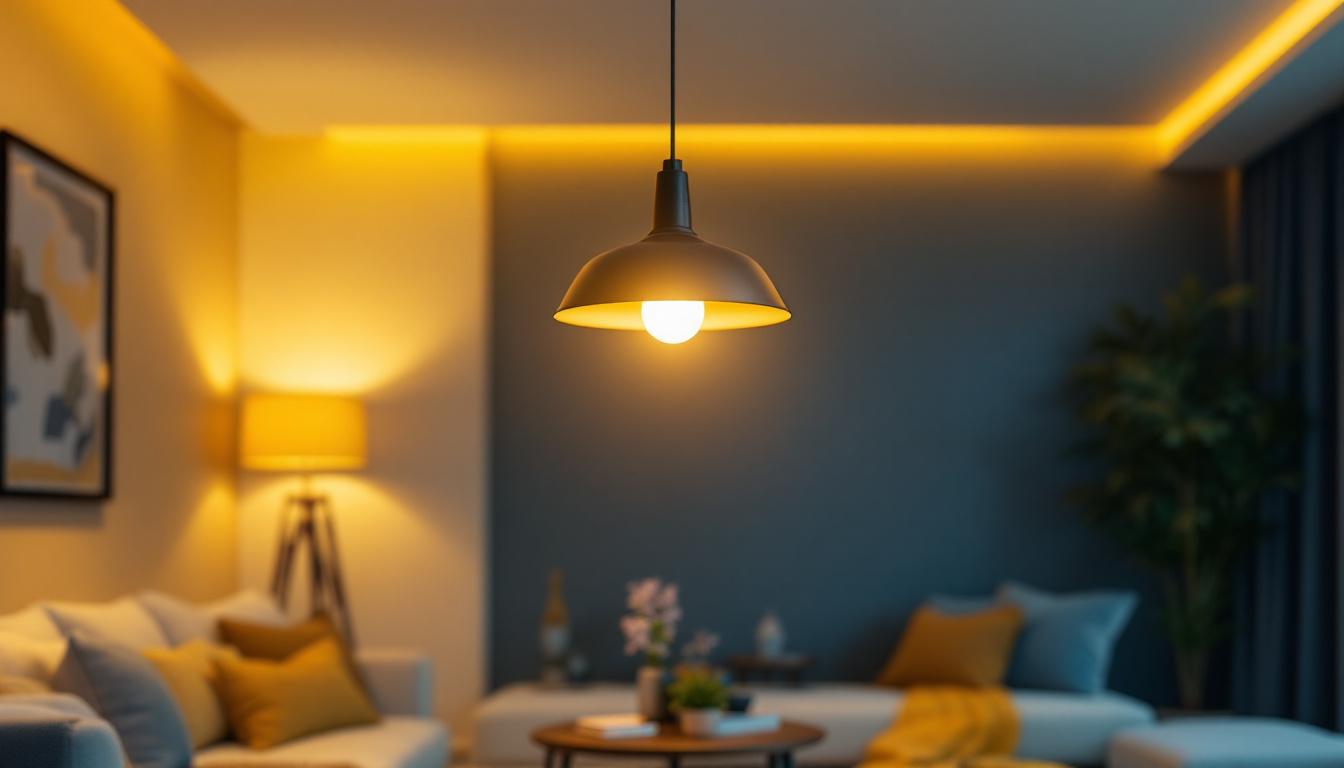
As the beauty industry continues to thrive, the importance of good lighting for makeup application cannot be overstated. For lighting contractors, understanding the nuances of lighting design specifically tailored for makeup can significantly enhance the client experience. Here, we delve into the essential do’s and don’ts that every lighting contractor should consider when designing lighting solutions for makeup applications.
Lighting plays a critical role in how makeup is applied and perceived. Proper lighting can enhance the appearance of skin tones, highlight features, and ensure that colors are true to life. Conversely, poor lighting can lead to uneven application and misrepresentation of colors, which can be detrimental in both professional and personal settings. The right lighting can make a significant difference in the final look, allowing for a more polished and professional appearance. For instance, a well-lit environment can help to minimize the appearance of blemishes and imperfections, giving the skin a more radiant glow.
Makeup artists and enthusiasts alike rely on appropriate lighting to achieve their desired looks. Therefore, lighting contractors must recognize the specific requirements of makeup application environments, whether they are designing for a professional studio, a retail space, or a personal vanity setup. In addition to the technical aspects of lighting, the ambiance created by the lighting can also influence the mood of the makeup application process. A well-thought-out lighting design can inspire creativity and confidence, making the experience more enjoyable for both the artist and the client.
When it comes to makeup lighting, not all light sources are created equal. The two primary types of lighting to consider are ambient and task lighting. Ambient lighting provides overall illumination, while task lighting focuses on specific areas where detailed work is performed, such as a makeup station. Task lighting is particularly important, as it allows for precision in application, ensuring that every stroke of the brush is visible and accurate. This is especially crucial when working with intricate techniques, such as contouring or applying eyeliner, where even the slightest misstep can alter the intended look.
In addition to these types, natural light is often considered the gold standard for makeup application. It offers a balanced spectrum that reflects true colors, making it easier for makeup artists to achieve flawless results. However, since natural light is not always available, contractors must find ways to replicate its qualities through artificial means. Solutions like daylight-balanced LED lights can mimic the effects of sunlight, providing a similar clarity and vibrancy. Furthermore, the placement of these lights is essential; soft diffused lighting positioned at eye level can help eliminate harsh shadows and create a more flattering illumination.
Color temperature is a crucial factor in lighting design for makeup. Measured in Kelvin (K), color temperature affects how colors appear under different lighting conditions. For makeup application, a color temperature between 3000K and 4000K is ideal, as it mimics the warmth of natural light. This range not only enhances skin tones but also allows for a more accurate representation of makeup shades, which is vital for selecting the right products and achieving a cohesive look.
Lighting contractors should be mindful of the color rendering index (CRI) as well, which measures a light source’s ability to accurately render colors. A CRI of 90 or above is recommended for makeup lighting, ensuring that colors appear true and vibrant. Additionally, using adjustable lighting can provide flexibility for different makeup styles and preferences. For example, a cooler light setting may be preferable for a more dramatic evening look, while a warmer tone could be ideal for a fresh daytime appearance. By understanding the nuances of color temperature and CRI, lighting designers can create versatile environments that cater to a wide range of beauty needs and preferences.
To create an optimal environment for makeup application, lighting contractors should adhere to several best practices. These do’s will help ensure that the lighting design meets the needs of makeup artists and their clients.
Relying on a single light source can create harsh shadows and uneven illumination, making it difficult for makeup application. Instead, using multiple light sources can provide a more balanced and flattering light. Consider incorporating overhead lights, side lighting, and task lights to create a well-rounded lighting setup.
For example, placing lights at eye level can help eliminate shadows on the face, while additional lights positioned at angles can enhance features and provide depth. This layered approach to lighting will create a more inviting and functional space for makeup application.
Flexibility is key when it comes to lighting for makeup. Dimmable lights allow users to adjust the brightness according to their preferences and the specific makeup application being performed. This adaptability is especially important in professional settings where different looks may require varying levels of illumination.
Moreover, dimmable options can help create a more relaxed atmosphere, which can be beneficial for clients who may feel anxious during makeup application. By providing control over the lighting, contractors can enhance the overall experience.
In today’s environmentally conscious world, energy efficiency is a significant consideration for lighting contractors. Opting for LED lights not only reduces energy consumption but also offers a longer lifespan compared to traditional incandescent bulbs. This choice can lead to cost savings for clients in the long run.
Additionally, LED lights are available in various color temperatures and can provide high CRI ratings, making them suitable for makeup applications. By prioritizing energy-efficient solutions, contractors can appeal to eco-conscious clients while still delivering high-quality lighting.
While there are many do’s to follow, there are also critical don’ts that lighting contractors should be aware of. Avoiding these common pitfalls can help ensure successful lighting designs for makeup applications.
Harsh, direct lighting can create unflattering shadows and highlights, making it challenging for makeup artists to achieve the desired look. Instead, opt for softer, diffused lighting that provides even illumination without creating stark contrasts.
Using light diffusers or softboxes can help achieve this effect. These tools soften the light and spread it more evenly, allowing for a more natural application process. This approach is particularly important in settings where clients may be sensitive to bright lights.
Lighting design should not exist in a vacuum. The surrounding environment plays a significant role in how lighting is perceived. Factors such as wall color, furniture, and decor can all influence the effectiveness of the lighting setup.
For instance, darker walls can absorb light and create a more subdued atmosphere, while lighter walls reflect light and enhance brightness. Contractors should consider these elements when designing lighting solutions to ensure that the overall aesthetic complements the lighting.
Finally, it is crucial not to overlook the maintenance and accessibility of lighting fixtures. Makeup areas should be designed with ease of access in mind, allowing for simple bulb replacements and adjustments. Fixtures that are difficult to reach can lead to frustration and downtime, particularly in professional settings.
Incorporating accessible designs not only enhances functionality but also demonstrates a commitment to quality and user experience. Contractors should prioritize fixtures that are easy to maintain, ensuring that clients can enjoy their lighting solutions without hassle.
Different environments require tailored lighting solutions. Whether designing for a professional makeup studio, a retail space, or a personal vanity, understanding the unique needs of each setting is essential.
In professional makeup studios, lighting must cater to the needs of makeup artists who require precision and accuracy. A combination of overhead lighting and adjustable task lights at eye level is ideal for creating a well-lit workspace.
Additionally, incorporating mirrors with built-in lighting can enhance the overall experience, allowing artists to see their work from multiple angles. The focus should be on creating a versatile environment that can accommodate various makeup styles and techniques.
For retail spaces, lighting should not only facilitate makeup application but also enhance the overall shopping experience. Bright, inviting lighting can draw customers in and encourage them to explore products. However, it is essential to balance brightness with warmth to create an inviting atmosphere.
Consider using adjustable lighting that can be tailored to different times of day and promotional events. This adaptability allows retailers to showcase products effectively while providing a comfortable environment for customers.
In personal vanity areas, the focus should be on creating a cozy yet functional space. Soft, warm lighting is ideal for a more intimate setting, allowing users to feel relaxed while applying their makeup.
Incorporating mirrors with integrated lighting can enhance usability, while adjustable fixtures can provide flexibility for different tasks. Ultimately, the goal is to create a space that feels personal and inviting, encouraging users to enjoy their makeup application process.
Good lighting for makeup is an essential aspect that lighting contractors must prioritize in their designs. By understanding the do’s and don’ts of lighting for makeup application, contractors can create environments that enhance the client experience and ensure flawless results.
From using multiple light sources and incorporating dimmable options to avoiding harsh lighting and considering the surrounding environment, these guidelines will help contractors deliver exceptional lighting solutions. Whether designing for professional studios, retail spaces, or personal vanity areas, the importance of tailored lighting cannot be overstated.
In a world where appearance matters, good lighting for makeup is not just a luxury; it is a necessity. By following these principles, lighting contractors can contribute to the beauty industry in meaningful ways, ensuring that every makeup application is a success.
Ready to elevate your lighting designs for makeup applications and beyond? At LumenWholesale, we provide lighting contractors with the highest quality, spec-grade lighting products at competitive wholesale prices. Say goodbye to local distributor markups and hello to a vast selection of reliable lighting solutions that meet rigorous industry standards. With our commitment to affordability and convenience, you’ll enjoy free shipping on bulk orders, ensuring you get the premium lighting you need at the best value. Don’t compromise on quality or cost. Discover the best in wholesale lighting at LumenWholesale and make every makeup application shine.

Discover how ceiling pendant light fixtures can transform your space from ordinary to extraordinary.

Discover how artwork light fixtures can transform spaces and elevate your business.

Discover essential resources and expert tips for mastering the use of 4 plug outlets in lighting projects.

Discover effective strategies for training your team in the installation and maintenance of receptacle outlets and lighting systems.